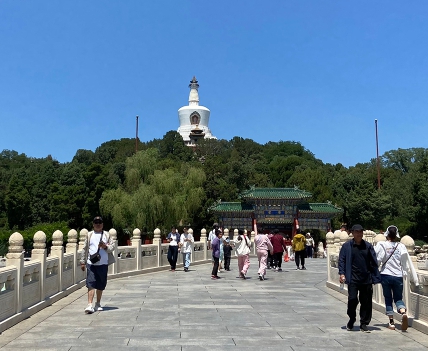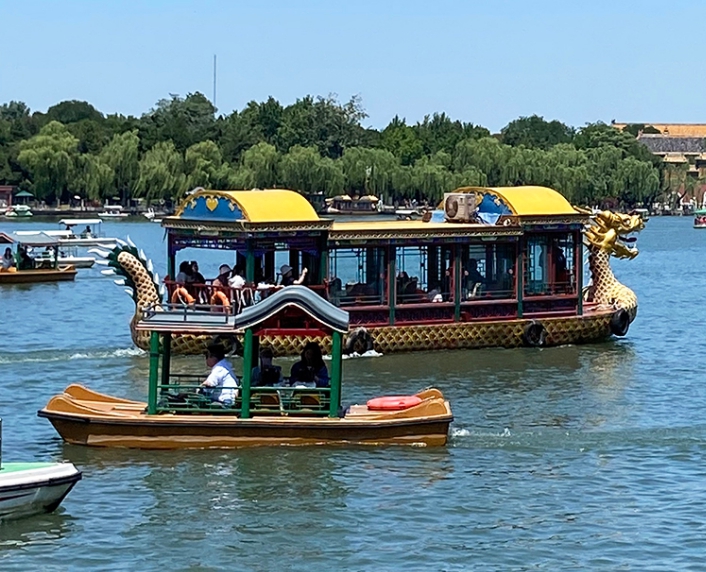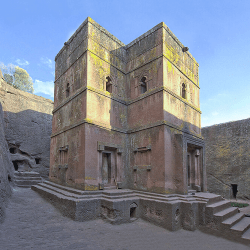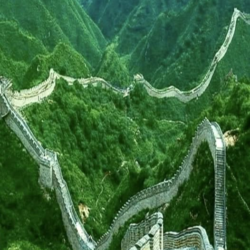Beihai Park, nestled northwest of Beijing’s iconic Forbidden City, is one of China’s most treasured historical gardens. Dating back to the 12th century, this magnificent park seamlessly weaves natural beauty with rich cultural heritage. Once the exclusive domain of emperors, today it welcomes visitors from around the world, offering a tranquil escape into history, art, and nature.
A Historical Gem Rooted in Imperial Grandeur
Originally built during the Liao Dynasty and extensively developed through the Jin, Yuan, Ming, and Qing dynasties, Beihai Park has served as a pleasure garden for Chinese royalty for nearly a millennium. With centuries of imperial patronage, it evolved into a masterpiece of classical Chinese landscaping, rich with Buddhist symbolism and traditional aesthetics.
The layout of the park is heavily influenced by Chinese cosmology, particularly the concept of the “Three Mountains and Five Gardens,” which reflects a utopian vision. Qionghua Island in the center of Beihai Lake represents the mythical Penglai Island — a Taoist paradise believed to be home to immortals.
Iconic Structures: The White Pagoda and Beyond
The park’s most recognizable structure is the White Pagoda, a 40-meter-tall Tibetan-style stupa perched atop Qionghua Island. Built in 1651 during the reign of the Shunzhi Emperor of the Qing Dynasty, the White Pagoda commemorates the visit of the 5th Dalai Lama and symbolizes national unity and Buddhism’s prominence in Chinese culture.
Surrounding the pagoda are richly decorated temples, pavilions, and halls, including:
- Yong’an Temple, housing exquisite bronze statues and colorful murals.
- Nine-Dragon Screen, one of only three of its kind in China, made of glazed tiles that depict nine fearsome dragons.
- Five-Dragon Pavilions, elegant waterside structures perfect for catching summer breezes.
- Circular City, a walled compound that once held a jade jar said to be from Kublai Khan’s court.
A Harmonious Blend of Nature and Design
Beihai Park is a textbook example of the art of Chinese landscape gardening. More than half of its 69 hectares is covered by Beihai Lake, offering picture-perfect reflections of willow trees, ornate bridges, and historical architecture.
Visitors can stroll the shaded pathways, feed ornamental carp from stone bridges, or embark on a relaxing boat ride across the lake. In spring, the park bursts into bloom with peonies, cherry blossoms, and lotuses, while in winter, the lake transforms into a skating rink — a beloved pastime for locals.


Cultural Activities and Local Traditions
Today, Beihai Park is not just a relic of the past; it’s a living, breathing part of Beijing’s daily rhythm. Locals gather for morning Tai Chi, fan dancing, and Peking opera performances. Calligraphy enthusiasts can be seen writing poetry on the pavement with water brushes, a fleeting art that disappears as the day warms.
Art exhibitions and cultural festivals are frequently held within the halls and galleries of the park, bringing traditional art forms to contemporary audiences. Beihai Park is especially lively during Chinese holidays, such as Lantern Festival and Mid-Autumn Festival, when the park is illuminated with colorful lanterns and filled with festive energy.
Modern Accessibility with Ancient Charm
Thanks to ongoing restoration efforts and the preservation of its original architecture, Beihai Park remains as splendid as ever. Modern amenities like guided audio tours, cafés, and well-maintained rest areas ensure a comfortable experience for tourists without compromising its historic charm.
Strategically located near key attractions such as Jingshan Park and the Forbidden City, Beihai Park is a must-visit on any cultural itinerary of Beijing. Visitors can access the park from multiple gates, with the south gate being the most popular due to its proximity to major subway lines and attractions.
Conclusion: A Living Legacy of China’s Classical Garden Art
Beihai Park is more than a scenic retreat — it’s a window into China’s imperial legacy, a sanctuary of nature amidst urban sprawl, and a celebration of cultural continuity. As one of the oldest and best-preserved imperial gardens in China, it invites all who enter to experience a timeless blend of architecture, spirituality, and natural beauty.
Whether you’re a history aficionado, a culture seeker, or simply in need of a peaceful walk, Beihai Park stands ready to share its stories — written in stone, whispered by the breeze, and reflected on the serene waters of the North Sea.











